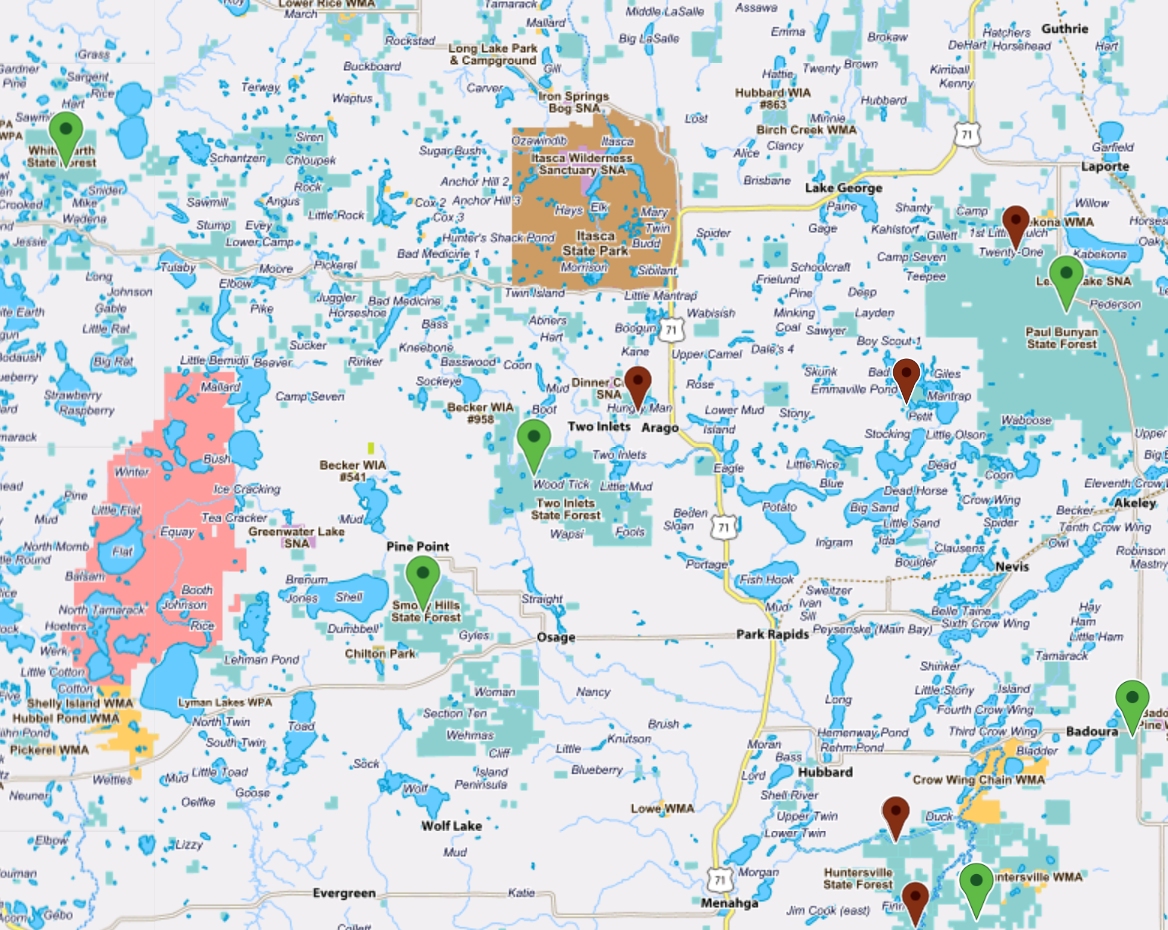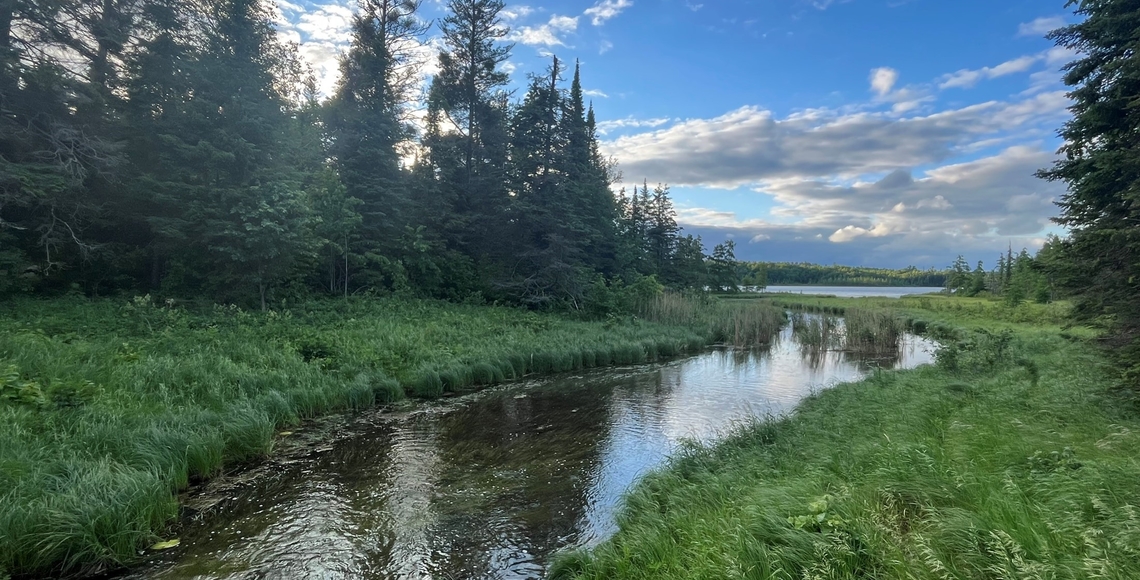The Itasca Biological Station is surrounded by countless locations and unique habitat types that are ideal for field research, both within the state park (some within walking distance, others a short drive on state park roads or accessible by boat or trails within the park) and in the surrounding region. Here, we highlight a few key areas that our researchers and courses use for field work.
Old Growth Forest Stands in Itasca State Park
Itasca State Park contains about 5,500 acres of old growth forest and is home to about 20% of the remaining old growth pine forest in Minnesota. Below is a 2023 map of the old growth stands in the park. See the next section about State Scientific and Natural Areas to learn more about the Itasca Wilderness Sanctuary section of this map (outlined in red below).
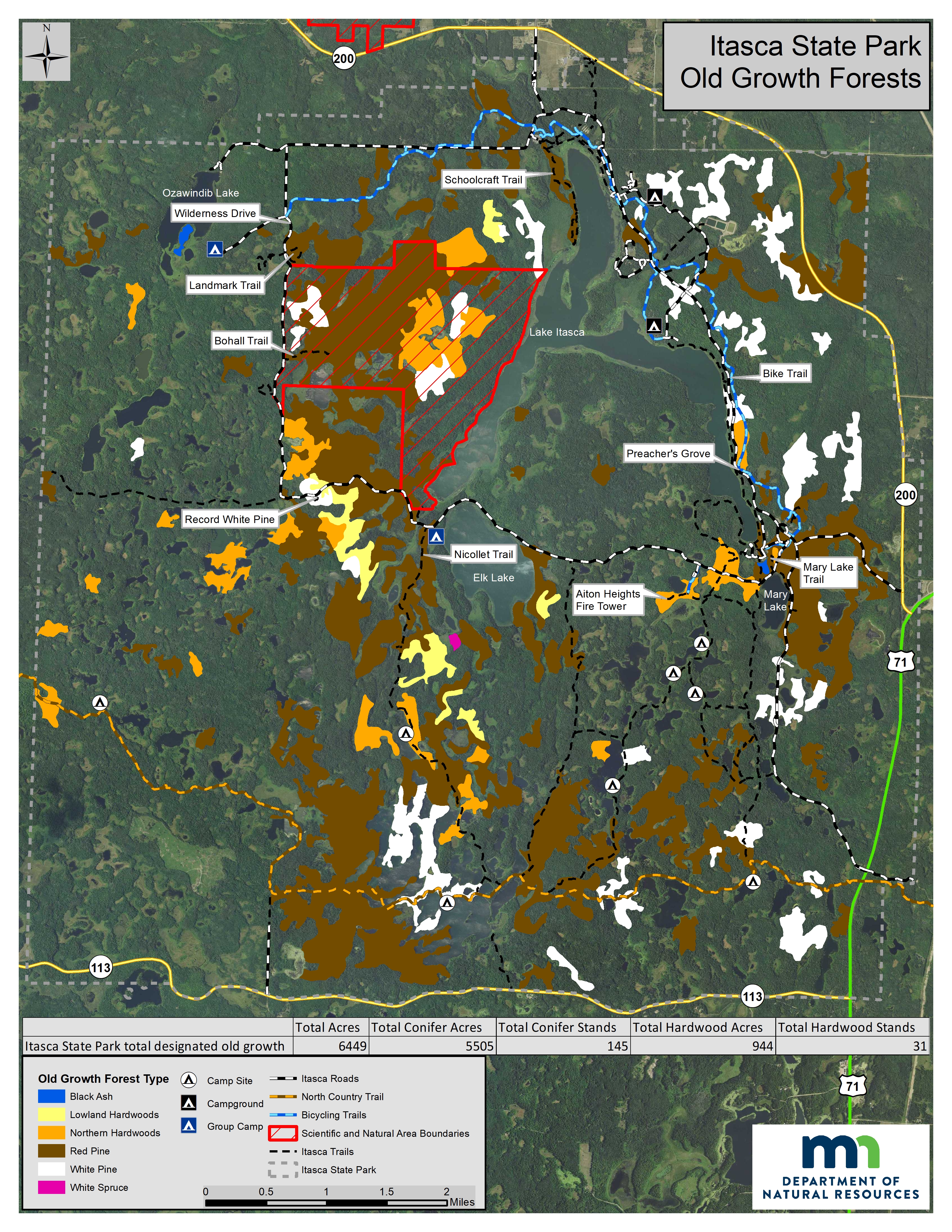
State Scientific and Natural Areas
Scientific and Natural Areas near Itasca Station
State Scientific and Natural Areas (SNAs) are exceptional environments where Minnesota's biodiversity thrives, rare species are protected, and the state's unique natural features can be discovered and studied. Several SNAs are within close driving distance to the station. The designation of some of these areas as SNAs was thanks, in part, to efforts by researchers at the Itasca Station. For a full list of State Scientific and Natural Areas, see the DNR website.
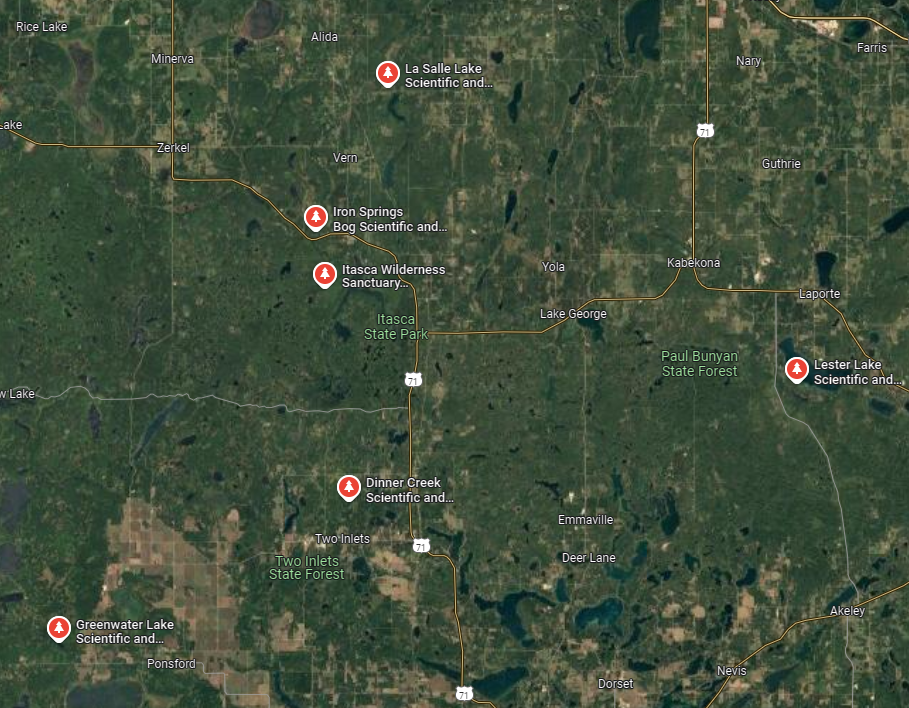
Itasca Wilderness Sanctuary SNA
The Itasca Wilderness Sanctuary is a 1600 acre SNA located along the western side of Lake Itasca and protects roughly two miles of undeveloped shoreline along the lake. A mosaic of eighteen native plant communities occupy the site, dominated by fire-dependent red pine – white pine forest communities. The SNA is accessible via the half-mile Lake Bohall footpath or the 1/4 mile Nicollet Creek path from Wilderness Drive, but most of the tract is protected and not open to general recreation.
The Itasca Wilderness Sanctuary holds an important place in Minnesota's conservation history. It was established in 1939 within the state park to preserve a part of the wilderness character of the state that existed prior to logging and settlement. In 1965, it became Minnesota's first National Natural Landmark. The Sanctuary's was designated as a state SNA in 1983, as the finest example of Great Lakes Pine Forest in north-central Minnesota. In 2023, the SNA was inducted into the Old Growth Forest Network, which recognizes existing old-growth forests across the nation and highlights the importance of preserving these areas.
Iron Springs Bog SNA
Iron Springs bog is a 231 acre SNA located just two miles north of Itasca State Park. Although named a “bog”, this site is actually a fen, characterized by springs of iron-rich groundwater welling up into the forested peatlands that border Sucker Creek. The site boasts a diversity of orchids and other wetland-dwelling plants. While the SNA is open to the public, there are no maintained trails, and visitors should be mindful not to trample the vegetation in this unique conifer swamp forest.
Given its distinctive water chemistry and the resulting plant communities, Iron Springs Bog has long been a popular field site for courses at the Itasca Station. In fact, professors Carl Otto Rosendahl and Murray Buell brought their botany class to the SNA to demonstrate paludification and the role of sphagnum moss in water filtration. Buell was the first to describe the area’s vegetation in his 1953 publication and was instrumental in promoting recognition of the site’s qualification for an official SNA designation. Even today, field microbiology and mycology students still visit Iron Springs Bog to study its water chemistry and unique flora.
Other Nearby SNAs
Many other SNAs are within close driving distance of the station, including:
Itasca Station Offsite Research Plots

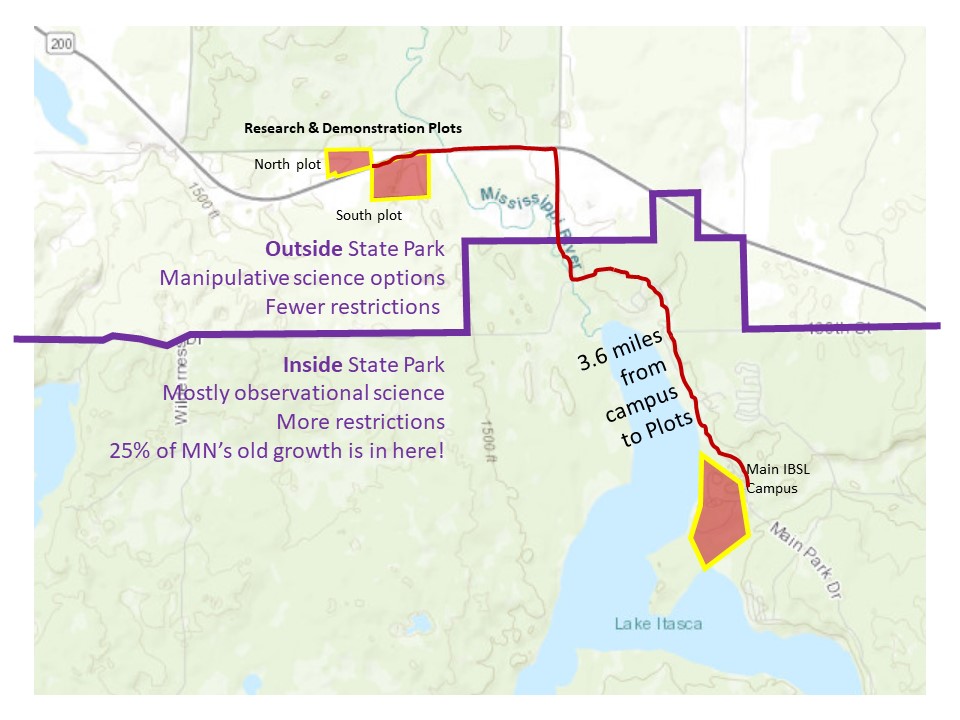
The University of Minnesota owns two plots of land north of Itasca State Park, just under 4 miles away from the station. They hold a mixture of early-successional forest and meadow. Unlike land within the state park boundaries, these UMN plots present an opportunity for manipulative research projects.
State Forests
There are many State Forests within close driving distance of the Itasca station, including Two Inlets State Forest, White Earth State Forest, Paul Bunyan State Forest, and Mississippi Headwaters State Forest.
